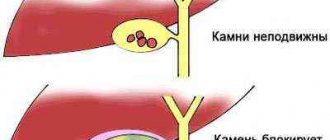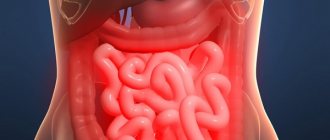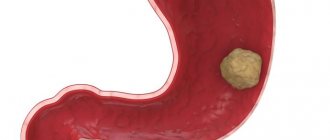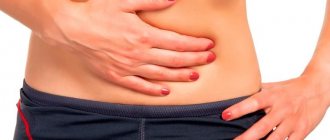Pain can be localized in the intestines for a variety of reasons. The characteristics of sensations can be very different: sharp, pulling, fuzzy, dagger-like.
The sensation can be localized not only in the rectal area, but also radiate to the lower abdominal wall, accompanied by various additional symptoms, such as bloody stools, a feeling of discomfort, burning or itching.
Pain can also radiate to the lower abdominal wall or rectum when the genitals are affected. In women, this most often occurs during ovulation.
To find out the reasons and begin timely treatment, the doctor conducts a number of tests and diagnostic measures.
What does the appearance of such pain indicate?
Abdominal pain can be caused by many factors.
Pain in the rectum and lower abdomen can have one pathological source or several different ones.
When we talk about rectal pain, we mean discomfort in the anal area. Lower abdominal pain describes a broader group of sensations that can be associated with both the digestive and genitourinary organs.
Rectal pain may occur against the background of increased intestinal motility. The sensation can range from mild pain that gets worse over time to severe pain that doesn't give you any relief.
Rectal pain has many causes, most of which are quite common and easily treatable. However, if rectal pain does not go away within 24 to 48 hours, it is important to see a doctor. The appearance of fever also indicates the emergence of a serious pathology.
Pain in the lower abdomen can also be associated with the rectum, but often the sensation is caused by pathologies of the bladder, overlying intestines, diseases of the prostate, uterus and other genital organs.
The doctor needs other clinical data to make an accurate diagnosis. The most common cause of rectal pain is chronic hemorrhoids. Such pain can intensify in a sitting position and have a sharp or even cutting character.
Other symptoms of chronic hemorrhoids include bleeding in the stool and constipation.
Treatment of cystitis
The danger of this disease cannot be underestimated. You can use the recommended ways to relieve symptoms if you cannot immediately seek medical help. But it is unacceptable to treat yourself without consulting a doctor.
Chronic cystitis destroys the bladder mucosa. This can lead to the formation of cysts, tumors and the danger of their transformation into malignant formations.
For cystitis, women were prescribed drinks, baths, microenemas with medicinal herbs, a special diet, and were instructed to carefully observe personal hygiene. Now that it has been established that untreated cystitis becomes chronic, antibiotics are necessarily used in the treatment of the acute form of the disease.
These drugs have contraindications and must be selected for each specific case. In laboratory conditions, tests determine the causative agent of the infection and its resistance to various antibiotics.
Collargol installations can be used to treat advanced stages of cystitis. And to monitor the results of treatment, urine is cultured on special nutrient media. This is the only way to determine whether the infection has subsided.
Primary cystitis can develop as a result of infection or injury to the mucous membrane of the bladder walls. Secondary – the result of diseases of nearby and even distant organs (infection through lymph, blood).
There are many treatments for this disease. Bacterial cystitis is treated with antibacterial drugs.
- Monural - for the treatment of acute forms of bacterial cystitis, for chronic ones - not used;
- Nolitsin is a broad-spectrum drug, used if medications are ineffective;
- Nitroxoline - for cystitis, infections of the bladder (urethritis, pyelonephritis);
- Furagin (Furamag) – for the treatment of inflammation of the MPS of an infectious nature;
- Others: Levomycytin, Nevigramon, Ceforal, Rulid, Palin.

To prevent cystitis, Furagin and Furadonin are used. Doctors are forced to constantly develop new effective drugs, as bacteria become resistant to drugs.
Characteristics of rectal pain
Rectal pain can last from a minute to half an hour.
Rectal tenderness is sudden and intense, and the sensation usually lasts less than a minute. In some rare cases, painful discomfort can last up to half an hour.
Read: Which category of people needs monitoring bowel cleansing
Patients describe this sensation as a sharp, stabbing or cramping pain that occurs in the anus.
Such pain can wake a person even during deep sleep, depriving him of peace for a long time. The soreness may be chronic and appear daily and then disappear for several weeks or months.
The pain may be related to the levator ani muscle. This sensation will occur in the rectal cavity and will be perceived as strong pressure. The pain increases when sitting and decreases when walking. The discomfort usually lasts 15-20 minutes or longer and tends to recur.
Most forms of hemorrhoids cause only mild pain, but the occurrence of hemorrhoidal thrombosis sharply increases the pain syndrome. This occurs when the blood in the veins of the rectum becomes viscous and forms impassable clots.
Symptoms of hemorrhoidal thrombosis are excruciating throbbing or stabbing pain that begins suddenly and lasts for several days.
An anal fissure causes sharp and cutting pain immediately upon occurrence and gradually develops into a dull pain that lasts for several hours. Damage to the skin in the rectal area may cause mild bleeding and blood in the stool.
Each bowel movement irritates the damaged skin, creating a burning pain. The pain can be so intense that many patients try to prevent bowel movements to no avail.
Herbal remedies
Herbal medicines are also used in complex therapy:
- Monurel – natural antibiotic (cranberry extract);
- Canephron - tablets from a collection of herbs (rosemary, centaury, lovage), reduces symptoms and the risk of exacerbations;
- Phytolysin is a combined herbal preparation for the treatment of diseases of the urinary organs and kidneys, recommended for sand in the bladder.
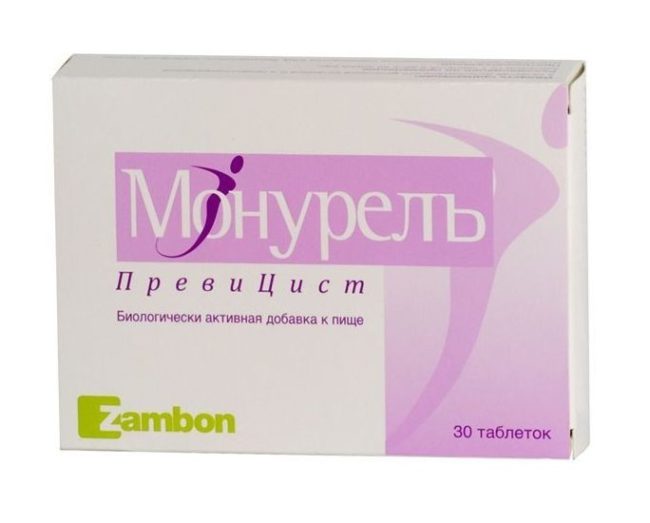
To relieve spasms and reduce pain, No-Shpa and Drotaverine (antispasmodics) are used. Nonsteroidal PVS are indicated for pain: Ibuprofen, Nurofen. To restore the vaginal microflora, which also affects the state of the vaginal tract, it is recommended to take a course of probiotics.
In rare cases, cystitis goes away without treatment if the cause that caused it (bladder stones, gynecological problems) is eliminated. Methods to help speed up recovery.
Self-medication can aggravate the disease or turn it into a chronic form with periodic relapses. If a woman experiences symptoms of cystitis up to 3 times within a year, then a visit to the doctor is required.
Causes of pain syndrome
Anal fissure is one of the causes of rectal pain.
We found that rectal and lower abdominal pain can have the same or different origins, but most often we are talking about pathology of the digestive and genitourinary organs. Let's look at the main causes of such pain.
- Anal fissure. This is an injury that can come from too hard stool or anal sex. With pathology, damage to the skin in the rectal area occurs, which leads to bleeding and pain. Discomfort increases when sitting and during bowel movements. In this case, scarlet blood may appear in the stool.
- Haemorrhoids. The disease is characterized by venous congestion in the anus, which leads to painful tumor-like protrusion of blood vessels. Hemorrhoids may be accompanied by a cutting pain while sitting on a chair and defecating. Hemorrhoids may also be accompanied by constipation, which will make the pain worse.
- Anal fistula. The disease is associated with the appearance of a small tunnel connecting the rectal cavity with the skin around the rectal area. In essence, this is a channel for the release of pus that occurs against the background of an infectious process. Symptoms of the pathology include acute throbbing pain in the anal area, a burning sensation, and the appearance of bloody pus in the stool. Often this disease requires surgical intervention.
- Inflammatory bowel disease. In addition to lower abdominal and rectal pain, this disease may be accompanied by abdominal cramps and bloody diarrhea.
- Prostatitis. This is a pathology of the prostate gland, accompanied not only by pain in the rectal area, but also by a false urge to defecate. The disease can also cause pain in the abdomen and pubic area.
- Oncology of the rectum. The disease has similar symptoms to hemorrhoids and anal fissure, but the symptoms are more pronounced.
Read: Pancreatitis: what it is, how it manifests itself, how it is treated
Nonspecific pain in the lower abdomen is often associated with diseases of the uterus and ovaries in women. In addition, in women, such pain often accompanies menstruation.
In men, pain in the lower abdomen may indicate a urethral infection.
Causes of pain in the anus
Pain in the anus is a common phenomenon that occurs with equal frequency in people regardless of gender and age. This unpleasant symptom causes a lot of suffering to its owners, but a rare person, feeling discomfort in the anus, rushes to the doctor with his problem.
The vast majority of people, out of sheer embarrassment, ignore going to a specialist, which only worsens their condition. But it is known that in most cases, anal pain hints at diseases of the rectum, ignoring which you can wait until the acute form of the disease becomes chronic.
Let's look at the causes of this unpleasant condition, its symptoms, and ways to eliminate pain.
Pain in the anus in healthy people
People suffering from such pain are primarily interested in whether healthy people can experience pain in the anus? There are indeed two cases in which the pain syndrome is not associated with any disease.
1. Similar pain occurs when sitting on a hard chair for a long time. This situation is most typical for office workers who spend a long time in a sitting position.
As a rule, the problem goes away literally a few minutes after the person gets to his feet and starts moving.2. Spasm of the muscles located around the anus can also cause spontaneous pain in the anus.
This problem usually occurs in teenagers, mainly at night. Adults and elderly people do not encounter this condition. What kind of pain in the anus occurs
In order to identify the existing disease and prescribe treatment, the specialist needs to know the nature of the pain that worries the patient. It can be stabbing, aching, pulling, etc.
In addition, in the case of an acute illness, the patient is tormented by severe pain, which arises quickly and goes away just as quickly.
But with a chronic illness, the pain syndrome is less pronounced, but the unpleasant sensations do not leave the patient for a long time.
Causes of pain in the anus
1. Hemorrhoids The most common cause of anal pain is hemorrhoids. This disease is associated with the inflammatory process and enlargement of hemorrhoidal veins, which are located around the anus.
Typically, pain with hemorrhoids does not appear immediately. For a long time, a person has been bothered by itching in the anus and the sensation of a foreign body in the rectum.
Painful sensations arise later, when during defecation the patient discovers prolapse of the hemorrhoid, which can be reset into the rectum on its own.
People suffering from hemorrhoids experience the most severe pain during exacerbation of the disease.
In this case, dagger pains appear in the anus, drops of blood are found in the stool, and the node itself seriously increases in size, falls out and can be pinched by the muscles of the anus.
In this case, the swollen node turns red and swells greatly, causing a lot of unpleasant sensations. This problem is eliminated with special suppositories and ointments, and in advanced conditions - with surgical removal of the hemorrhoid.
2. Anal fissure (rectal fissure) Very often, the considered pain is provoked by a fissure in the anus. The cutting pain in this case is localized on the surface of the anus, as its mucous membrane bursts, forming a deep crack.
The pain is extremely strong, and all because there are many nerve endings in this area.
For this reason, the pain syndrome spreads to the perineum and pelvic area, making the act of defecation extremely painful, and sometimes disrupting the process of urination and menstruation in women.
A fissure in the anus can appear for a variety of reasons, for example, when hard feces pass through or a sharp object enters the rectum.
Severe constipation or prolonged diarrhea can provoke the problem. Fortunately, an anal fissure is most often detected even during a visual examination and can be treated well with the use of ointments, creams and suppositories. Surgical intervention is required only in exceptional cases.
However, you should be careful, because once the problem starts, the disease can become chronic. A similar problem is possible in both adults and children, but women most often suffer from rectal fissures, due to the anatomical features of the anus.
3. Proctitis This pathological process is an inflammation of the colon mucosa. The pain that appears can be described as stabbing or cutting. Among the accompanying symptoms of this condition are purulent and bloody discharge during bowel movements, and given that proctitis is an inflammatory process, fever and general malaise.
In some cases, it is not the colon mucosa itself that is affected by inflammation, but the surrounding fatty tissue. Such purulent inflammation in medicine is called paraproctitis. Paraproctitis is very similar to acute proctitis, only the symptoms of the disease are even more pronounced, because
infectious agents irritate numerous nerve endings. The process of defecation in such a patient is a real torment, because due to sharp pain in the anus, the person screams and strongly strains the muscles. And this leads to constipation.
Without timely treatment, fistulas may form on the skin in the anus, releasing pus.
To combat acute proctitis and paraproctitis, antibiotics and anesthetic suppositories are used. In severe cases, surgery cannot be avoided.
It is only important to detect and treat proctitis in a timely manner, because without medical care the disease can become chronic.
In this case, the patient will be forced to almost constantly suffer from dull, aching pain, which will remind itself with every bowel movement.
4. Rectal prolapse If the above diseases occur with equal frequency in both sexes, then rectal prolapse mostly affects women. Elderly ladies, as well as representatives of the fairer sex who have had more than one pregnancy, face this problem especially often.
In this condition, a section of the mucous membrane loses its existing fixation and begins to fall out of the anus, being pinched by the anus. The nerve endings are pinched, which causes severe pain.
True, in some women such loss occurs completely painlessly. And this is an extremely dangerous condition, because pain in this case can signal a problem too late, when the rectal area has already died. In any case, intestinal prolapse is a reason for surgery, which must be performed as an emergency.
5. Rectal polyps Abnormal growths called polyps sometimes appear on the walls of the large intestine.
Usually they do not give any symptoms, but sometimes a person feels discomfort in the anus and also notices drops of blood in the stool.
Almost always, such neoplasms are subject to surgical removal, because in addition to causing discomfort, polyps are one of the factors in the development of rectal cancer.
6. Helminthiases Helminthiases are parasitic pathologies that usually manifest themselves as a sensation of itching and burning in the rectum, especially at night.
In addition, the patient experiences periodic constipation, fever, and a rash appears on the skin.
Fortunately, after diagnostic measures and identification of a parasitic helminth in the body, it is not difficult to get rid of it with the help of medications. Painful sensations in this case also disappear.
7. Foreign bodies In case of unpleasant sensations in the anus, the appearance of a foreign body in it cannot be ruled out. This primarily applies to hard and sharp objects.
An example is a swallowed fish bone that scratches or digs into irregularities in the wall of the large intestine, causing inflammation. In addition, pain is provoked by objects that are too large, which, once in the rectum, stretch its walls.
This may include hard objects that are inserted into the rectum to stimulate the genitals.
8. Anal sex According to reviews, people who engage in anal sex often experience pain in the anus.
Often these are just uncomfortable sensations that go away without treatment, but there are cases of rupture of the mucous membrane and injury to the walls of the rectum. In this case, the pain becomes more intense, and blood appears from the anus.
To avoid inflammation, it is important to consult a doctor in a timely manner and undergo the prescribed treatment.
9. Injuries to the anus Among other things, the large intestine can be injured due to bruise due to a fall on the “fifth point”.
In this case, a person experiences a dull pain deep in the anus for several days, which gradually weakens and finally disappears after about a week. The situation develops much more complicated in the case of a fracture of the pelvic bones.
Broken bones can easily damage the large intestine, causing blood loss and severe pain that can send the patient into shock.
10. Malignant tumor of the colon According to reviews, an oncological tumor in the anus gives vivid painful symptoms.
Of course, in the early stages of the disease, cancer does not manifest itself in any way, but from the moment the tumor enlarges and metastases grow into the walls of the large intestine, the patient begins to feel pain during bowel movements, which is often supplemented by streaks of blood in the stool.
Over time, such pain becomes constant, can become pulling or stabbing, and is also accompanied by severe itching. If you do not consult a proctologist in a timely manner and do not undergo diagnostics, pain will appear in the lower abdomen.
Pain in the anus during pregnancy
Separately, it should be said about pain in the anus in pregnant women. Unpleasant sensations may appear due to an increase in the size of the uterus, which begins to put pressure on neighboring organs, including the rectum, its nerves and blood vessels. In parallel with this process, the expectant mother develops chronic constipation, which only intensifies the discomfort.
Do not forget the fact that as the fetus grows, a woman’s pelvic bones expand, which provokes pain in the tailbone and anus. Moreover, if a woman previously underwent surgery on the rectum or injured this organ, during pregnancy the damage will remind itself of aching pain.
It is extremely rare that pain in the anus hints at a lack of vitamins and minerals in the female body, and therefore indicates a threat of miscarriage. That is why pregnant women should not ignore such unpleasant symptoms.
Diseases in which pain radiates to the anus
It is worth saying that there are a number of diseases that are not related to the rectum, but cause pain in the anus. These are pathologies such as: Prostatitis. This disease is typical for older men.
The most obvious symptoms of prostatitis are problems with erection and urination, but the disease can also be suspected by discomfort in the anal area. In the “sitting” position, a sick man may feel as if he is sitting on a small ball.
Sometimes such discomfort develops into nagging pain in the anus.
Acute appendicitis. Everyone knows that inflammation of the appendix is characterized by acute pain in the right side, fever and nausea. However, pain in this disease can radiate to the anus.
Diseases of the genital organs. If we talk about men, then they may experience pain in the anus in case of testicular diseases. Other symptoms that indicate problems with the testicles include redness and swelling.
As for the fair sex, their gynecological diseases very often radiate to the anus, and therefore you should not hesitate to feel this symptom and expect it to disappear on its own.
It is better to see a doctor and get examined.
Pathologies of the urinary system. It is known that the bladder is located in close proximity to the large intestine, and therefore diseases such as bladder tumors, the presence of stones in it and cystitis often manifest themselves as pain in the anus.
Diagnosis of diseases
When faced with pain in the anus, you should not wait until the pain goes away on its own. Most likely, this will not happen, and the emerging disease will only progress. To find out the cause of the disease, you need to consult a proctologist. If necessary, you may also need to consult a traumatologist, venereologist or oncologist.
To begin with, the proctologist will examine the anus and palpate it. True, palpation does not always help to identify the disease, and besides, it is too painful for the patient.
Let's take, for example, an anal fissure. If it is located too deep, it cannot be seen with the naked eye, and palpation will lead to an even greater rupture of the anal wall.
In this case, instrumental research methods come to the rescue.
To understand the situation, the doctor prescribes a sigmoidoscopy for the patient. During this procedure, a sigmoidoscope is inserted into the patient’s rectum - a device with a light source and a system of optical eyepieces that allows the specialist to study the condition of the walls of the large intestine.
Moreover, if necessary, a sigmoidoscope allows you to remove solid objects stuck in the rectum, remove polyps, cauterize a small tumor, or take a piece of mucous membrane for a biopsy.
Sigmoidoscopy is used to examine the rectum, and colonoscopy is used to examine the entire large intestine (anus, rectum, colon, and cecum).
In addition, X-ray examination, ultrasound examination, as well as a number of clinical tests can be used in the diagnosis of diseases of the large intestine.
When is a doctor needed?
You can use ointment or cream to relieve pain.
Pain in the rectum and lower abdomen does not necessarily indicate a serious pathological process, but some signs require medical attention. The patient should consult a doctor if the following symptoms are detected:
- Rectal pain becomes more pronounced, fever and weakness in the body appear.
- The pain spreads from the rectum to a large area of the abdomen.
- Passes more bloody clots in the stool.
- General signs of illness appear, including dizziness and pale skin.
- There is a feeling of a foreign body in the rectum or there is a suspicion of rectal prolapse.
The patient should immediately consult a doctor if he suspects hemorrhoidal thrombosis. Long-term blockage of veins can lead to serious consequences. Also, immediate medical attention is needed if you suspect heavy bleeding or colon cancer. Extensive blood loss may be accompanied by dizziness, pale skin and loss of consciousness.
How to treat rectal fistula, you will learn from the video:
Analyzes and examinations
At the 36th week of pregnancy, a blood test for syphilis and AIDS, a biochemical blood test, and a vaginal smear are taken again. At this time, it is necessary to conduct the last ultrasound examination, during which the condition of the placenta, the weight and height of the fetus, its presentation and position in the uterus, as well as the quality and quantity of amniotic fluid are assessed.
If all the examination results are satisfactory, the pregnant woman continues to visit the doctor weekly and regularly undergoes a general urine test. If any abnormalities are detected in the condition of a child or a pregnant woman, the woman is taken under special medical supervision, the necessary medications are prescribed and additional studies are carried out.
How to get rid of pain?
Pain in the rectum and lower abdomen, as we already know, is associated with various causes, so treatment can only be prescribed by a doctor. However, if the patient already knows the source of the pain, then you can try to alleviate the condition yourself. The following methods may help:
- Take a hot bath for 15 minutes two to three times a day.
- Use cream or ointment to relieve hemorrhoids.
Take stool softeners or eat fiber foods to reduce pain when moving your bowels. Diet is also important in the prevention and treatment of rectal and lower abdominal pain. We explained the origin of pain in the rectum and lower abdomen, and also talked about the method of getting rid of discomfort.
Read: Infusion therapy: methodology, methods, enteral and parenteral nutrition, risks and complications
Read along with this article:
- What is in a person’s left side and what can hurt there?
- What to do if there is pain in the right side of the lower abdomen?
- Pain in the rectum: causes of discomfort
- Is severe pain in the lower abdomen a reason to call an ambulance?
- We find out what diseases cause pain in the lower abdomen on the left side
- Severe pain in the left side of the lower abdomen: what may bother you
- Acute pain in the right side: causes and its meaning in...
- Spleen diseases: symptoms and causes
- Bloating and lower abdominal pain: main causes and treatment
Nutrition for the expectant mother
At week 36, a pregnant woman’s diet should be no less high in calories than before. The diet should be designed taking into account the reduced energy costs during this period of waiting for the baby. But at the same time, you need to eat well, focusing on food rich in vitamins and microelements. The consumption of animal fats and simple carbohydrates should be limited. The fetus during this period should not lack nutrients in order to avoid further developmental delays and a decrease in its viability.
All products consumed must be safe. It is necessary to strictly monitor their expiration date, process and store them correctly. Do not get carried away with exotic fruits to avoid poisoning. You need to eat often, but in small portions. The amount of liquid you drink should not exceed one liter per day. Approximately once every seven days you can arrange fasting days, freeing the body of excess water. You should not eat at night, consume sweet and salty foods, as well as products made from butter and shortcrust pastry.





